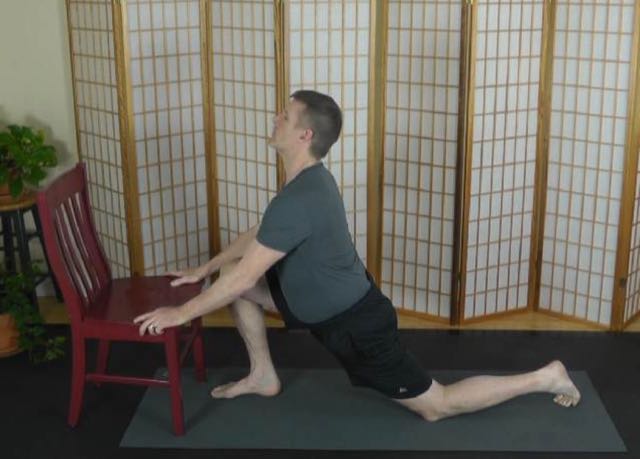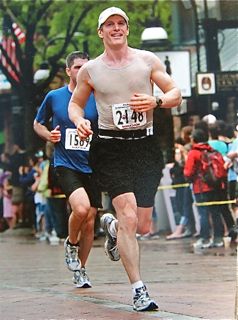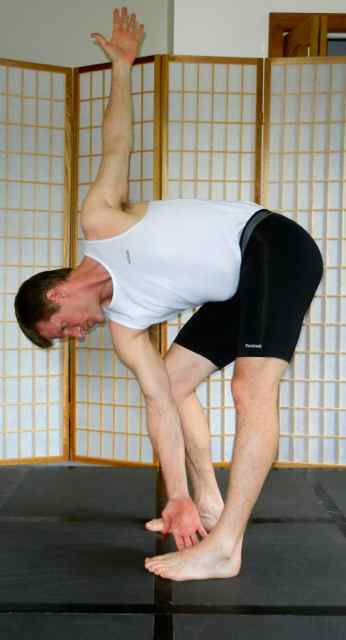Benefits of Stretching to Relieve Back Pain and Body Pain
The Dynamic Benefits of Stretching
The benefits of stretching cannot be overstated. To relieve lower back pain it's not only essential to improve flexibility of the back muscles, but to improve flexibility of the whole body.
When the body is thoroughly stretched out on a regular basis, the potential benefits can be profound and numerous...

top ten benefits of stretching
1. stretching enhances well-being
When our energy is liberated from being drained away by muscular tightness, we can feel better about every aspect of our lives.
2. stretching improves overall energy
When our bodies are not locked up by chronic muscular tightness, it inevitably leads to much greater overall energy. We no longer feel like we're dragging through the day, continually reaching for caffeine to get us through.
|
Flexibility boosts our overall energy because the body is not struggling to perform the simple tasks of daily living. |
3. Stretching relieves chronic lower back pain
In my clinical practice over a thirty year period I've observed that upwards of 85% of all the lower back pain cases are markedly improved by simply employing a regime of regular stretching, supplemented by core and overall strengthening.
4. Stretching relieves overall bodily aches and pains
My clients never cease to be surprised by how much better they can feel once they get really stretched out, head to toe. It's an unfortunate common belief that aches and pains are just a fact of aging. This is only true when flexibility is ignored.
5. Stretching relieves stress
By the same token that tension in our bodies contributes to tension in our minds, releasing bodily tension has the power to relax the mind and peel stress away.
6. Stretching restores ease and comfort in movement
By virtue of the fact that our limbs and joints can move more easily and fluidly when our flexibility improves, it can no longer be a chore to turn your head to back the car out or bend down to play with your children.
7. Stretching speeds recovery after exercise
Top athletes know that they could not continue perform at a high level without stretching. It's the rest of us who don't always take advantage of the fact that we are much more durable and ready for the next workout when we thoroughly stretch after exercise.

8. Stretching improves athletic performance
If our muscles are able to contract and relax fully, then they possess their maximum potential to perform. If, for example, a muscle is 25% chronically contracted going into a workout, it possesses only 75% of its potential to perform.
9. Stretching reduces the likelihood of injury
Tight, short, stuck muscles are not prepared for action. If you've ever bent over and tweaked your back, you've experienced back muscles that are not prepared for bending.
10. Stretching reduces moodiness
One of the biggest contributors to moodiness is exhaustion. Liberate the body's muscles from their imprisoned state of tightness and moodiness is replaced by a lightness of spirit.
The right kind of stretching
I have evolved over the years to adopt Active Isolated Stretching to replace static stretching. For too many us, static stretching is ineffective because it provokes what's called the protective stretch reflex.
This reflex can be triggered in as few as five seconds of a held, static stretch. You know it's happening when the muscle feels like its fighting against you rather than lengthening.
When this reflex is triggered, the benefits of stretching can be much more limited. If you've ever tried for weeks or longer to improve your hamstring tightness, for example, but felt like you weren't making any progress you may have been triggering this reflex over and over.
Further benefits of stretching
It cannot be overstated how much of our energy is sapped away by moving through the world with tight, short muscles.

If your legs are stiff, then every step in walking is taxed by the body struggling against muscular tightness.
If your shoulders are inflexible, then the simple act of reaching for a box of cereal on the shelf requires much more effort.
Even the act of breathing can sap our energy if the intercostal muscles between our ribs are so tight that the expansion of our ribcage during an in-breath is constricted. And we take over 20,000 breaths in a 24 hour period!
Even if one doesn't experience pain while performing simple movements with a tight body, one does experience the accumulated energy drain of the body working too hard.
Once we really appreciate the truth of this it's not hard to see how much energy — how much exuberance! — is available to us if we take seriously the goal of improving overall flexibility.
The Exuberant Movement of Children

If you observe the movement of a healthy child, what you see is the fluidity and flexibility which is natural to us all from birth. What you see is exuberant movement.
Children hop, jump, skip, and roll on the floor. They jerk this way and that, snapping their joints in every possible direction. They reach, lunge, crawl, run, spin, etc.

In short, an active child's muscles are taken through a continuous
series of extremely varied movements which results in a number of
important benefits…
• Their muscles are continually replenished with a fresh supply of oxygenated blood and nutrients
• Their muscles are continually lengthening and contracting which results in the maintenance of a healthy resting length
Children naturally gain the benefits of stretching due to near-continual movement. When muscles maintain a healthy resting length they are ready for action the next time we call on them.
If, on the other hand, muscles do not maintain a healthy resting length — if they become chronically tight and short — then flexibility is impaired.
Anatomy Images Courtesy of BIODIGITAL

|
CURRENT COURSES POSTURAL BLUEPRINT FOR CORRECTING PELVIC TORSION: The Complete Guide To Restoring Pelvic Balance (2022) STRETCHING BLUEPRINT FOR PAIN RELIEF & BETTER FLEXIBILITY: The Complete Guide to Pain-Free Muscles Using Active Isolated Stretching (2020) HEALING THE HIDDEN ROOT OF PAIN: Self-Treatment for Iliopsoas Syndrome (2013) FREE MINI COURSE: Introduction to Active Isolated Stretching |

